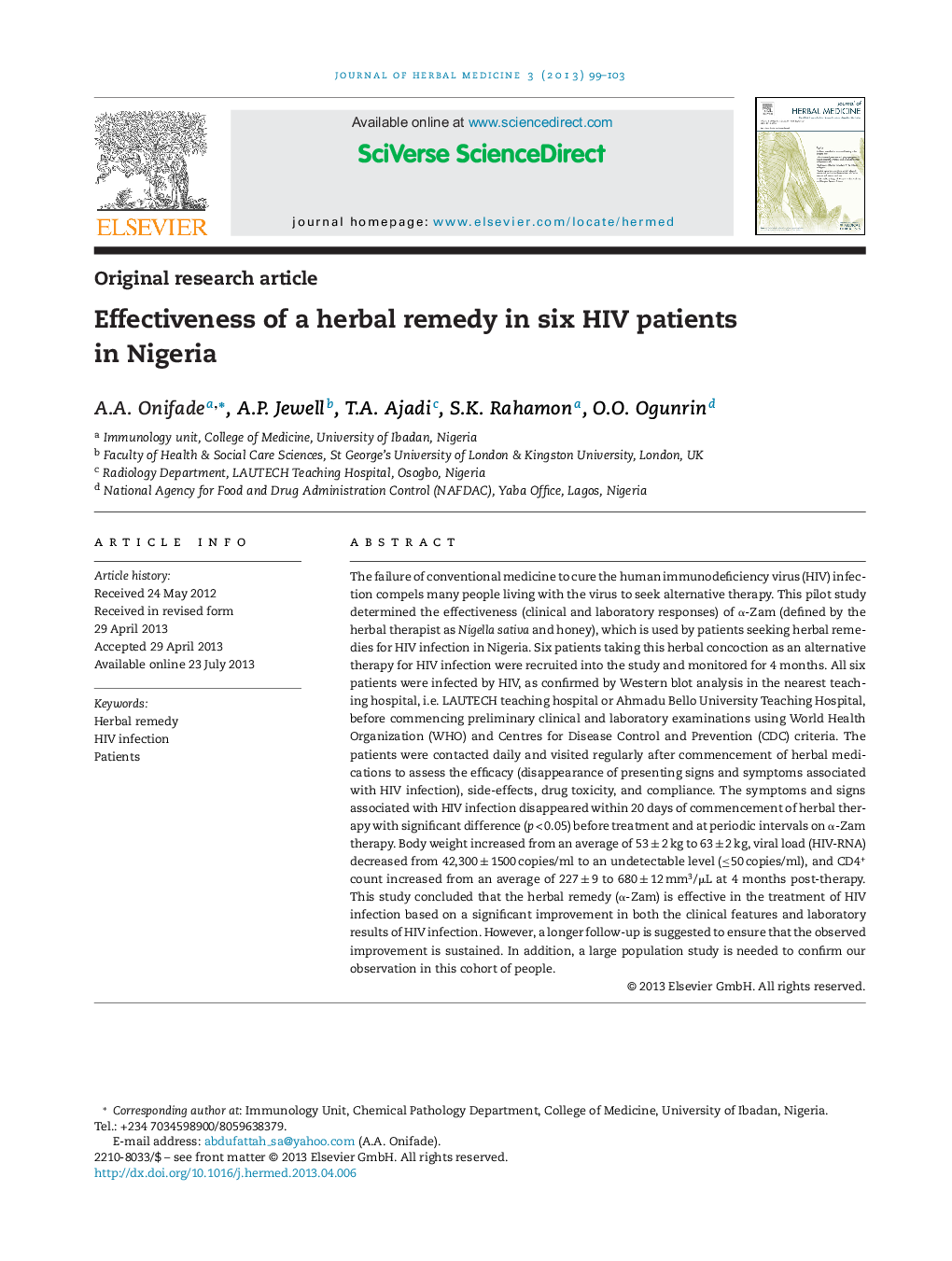| Article ID | Journal | Published Year | Pages | File Type |
|---|---|---|---|---|
| 2484124 | Journal of Herbal Medicine | 2013 | 5 Pages |
The failure of conventional medicine to cure the human immunodeficiency virus (HIV) infection compels many people living with the virus to seek alternative therapy. This pilot study determined the effectiveness (clinical and laboratory responses) of α-Zam (defined by the herbal therapist as Nigella sativa and honey), which is used by patients seeking herbal remedies for HIV infection in Nigeria. Six patients taking this herbal concoction as an alternative therapy for HIV infection were recruited into the study and monitored for 4 months. All six patients were infected by HIV, as confirmed by Western blot analysis in the nearest teaching hospital, i.e. LAUTECH teaching hospital or Ahmadu Bello University Teaching Hospital, before commencing preliminary clinical and laboratory examinations using World Health Organization (WHO) and Centres for Disease Control and Prevention (CDC) criteria. The patients were contacted daily and visited regularly after commencement of herbal medications to assess the efficacy (disappearance of presenting signs and symptoms associated with HIV infection), side-effects, drug toxicity, and compliance. The symptoms and signs associated with HIV infection disappeared within 20 days of commencement of herbal therapy with significant difference (p < 0.05) before treatment and at periodic intervals on α-Zam therapy. Body weight increased from an average of 53 ± 2 kg to 63 ± 2 kg, viral load (HIV-RNA) decreased from 42,300 ± 1500 copies/ml to an undetectable level (≤50 copies/ml), and CD4+ count increased from an average of 227 ± 9 to 680 ± 12 mm3/μL at 4 months post-therapy. This study concluded that the herbal remedy (α-Zam) is effective in the treatment of HIV infection based on a significant improvement in both the clinical features and laboratory results of HIV infection. However, a longer follow-up is suggested to ensure that the observed improvement is sustained. In addition, a large population study is needed to confirm our observation in this cohort of people.
